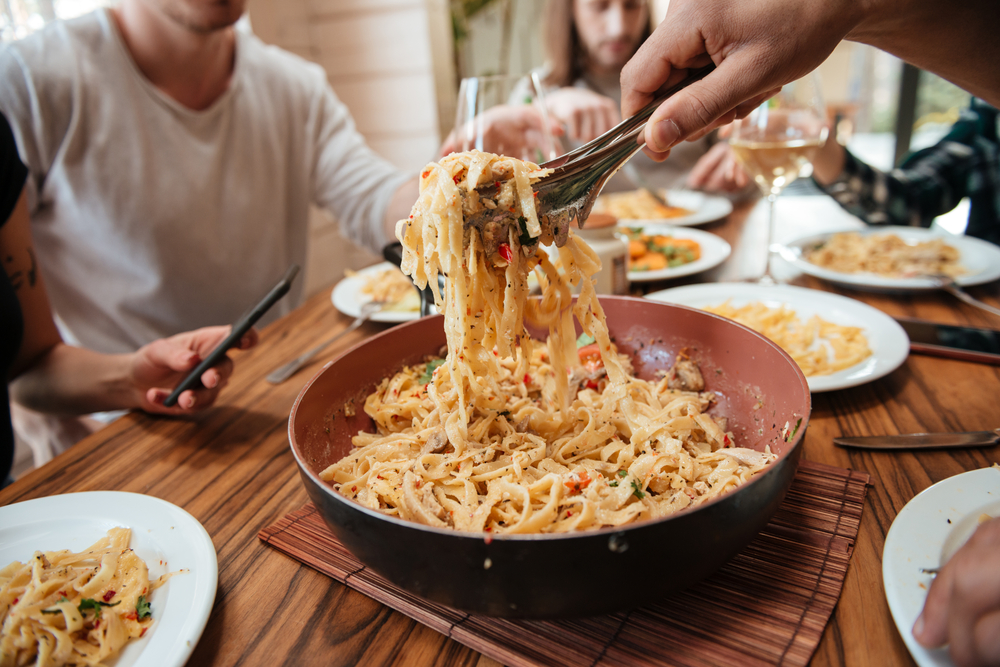Pasta is one of the most popular foods worldwide. It feels simple to prepare, yet many people repeat the same errors. These mistakes when cooking pasta often lead to noodles that are sticky, bland, or mushy. By learning what to avoid, you can improve both taste and texture while making your pasta dishes far more enjoyable. Small details can make the difference between a forgettable meal and a dish that feels like it came from a true Italian kitchen.
Not Using Enough Water
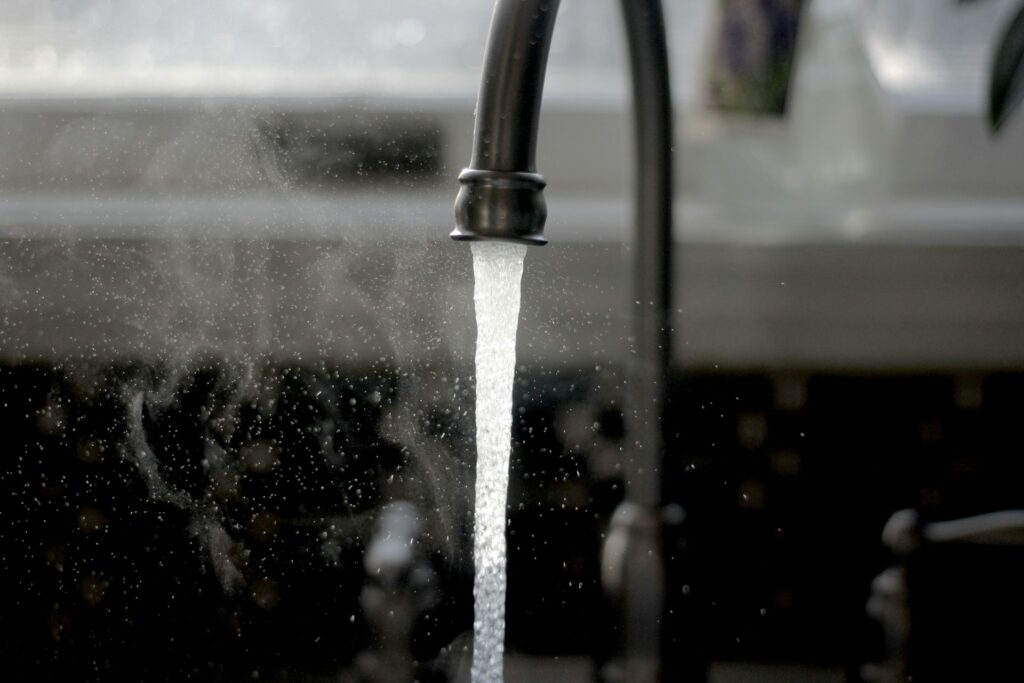
One of the most overlooked pasta cooking errors is using too little water. A crowded pot forces noodles to stick and cook unevenly. Pasta needs plenty of space to move as it boils, otherwise starches cling and create clumps. A helpful guide is four to six quarts of water for each pound of pasta. This allows starches to spread properly and keeps noodles from sticking together. With the right amount of water, pasta cooks evenly, maintains its structure, and delivers a pleasant bite every time. Choosing a larger pot also prevents spillover and gives you room to stir comfortably, avoiding another common pasta mistake.
Forgetting to Salt the Water
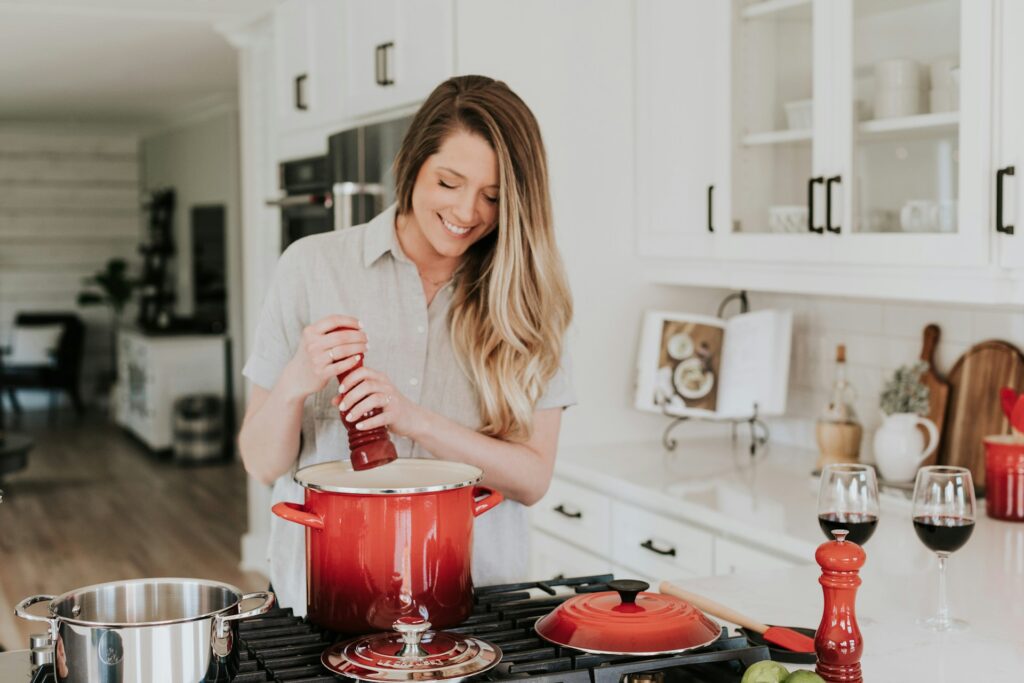
Another frequent pasta preparation misstep is forgetting to season the water. Cooking pasta in unsalted water produces a dull flavor that no sauce can fully fix. Salt penetrates the noodles as they boil, giving them taste from the inside out. Adding salt only after draining cannot create the same depth or balance. For best results, use one to two tablespoons of salt for each pound of pasta, depending on your preference. The water should taste lightly salty, much like seawater. This ensures the pasta is flavorful even before adding sauce. Proper seasoning elevates the entire dish and avoids one of the most common pasta mistakes cooks make at home.
Adding Oil to the Water
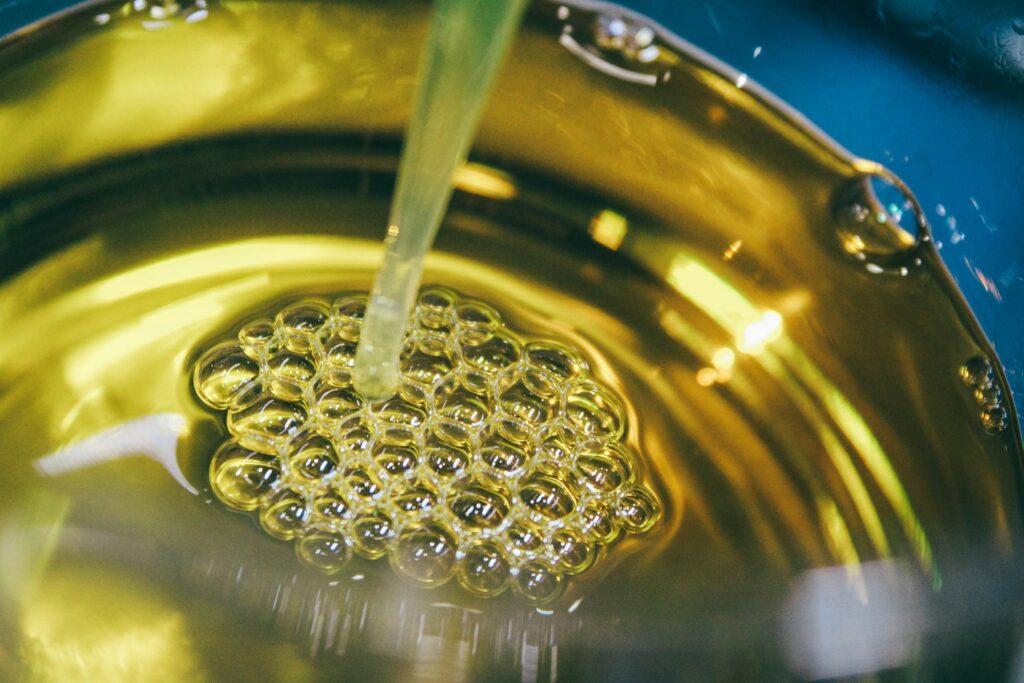
Many people believe adding oil to the cooking water prevents noodles from sticking. In reality, this is a common pasta mistake that does more harm than good. Oil coats the pasta and makes it slippery, which stops sauces from clinging and reduces overall flavor. Instead of oil, stir the pasta during the first few minutes of cooking. This is when starch is most likely to cause sticking, so movement is essential. With enough water and occasional stirring, you can avoid clumping without sacrificing sauce absorption. Keeping the noodles free of oil ensures they pair beautifully with rich tomato sauces, creamy Alfredo, or light olive oil dressings. Avoiding this misstep improves both flavor and texture in every dish.
Overcooking the Pasta
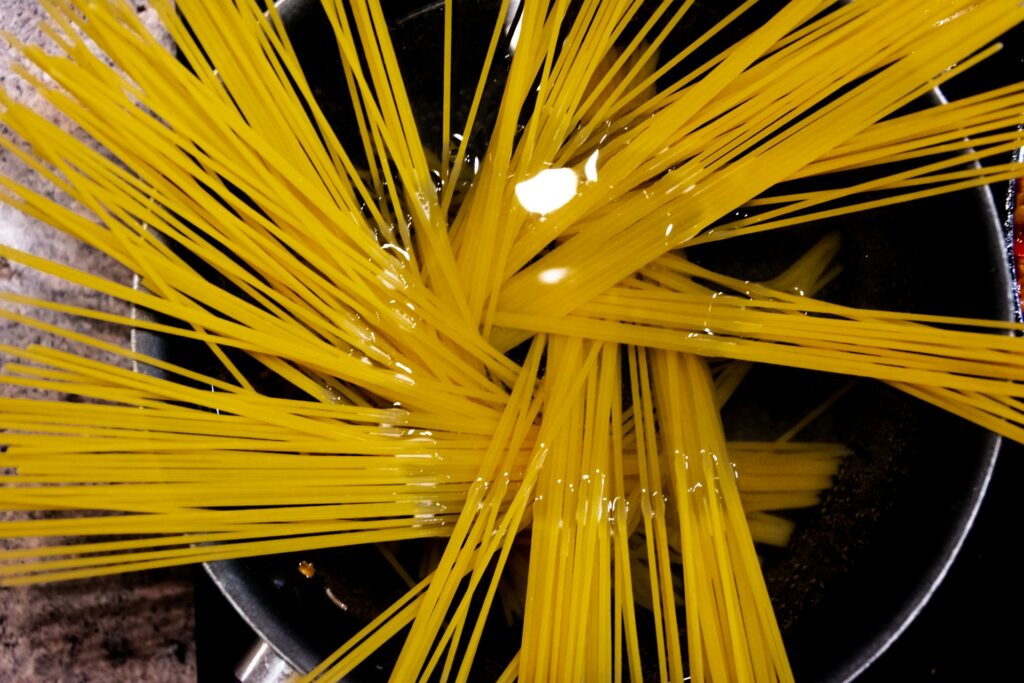
Overcooking is one of the biggest mistakes when cooking pasta, and it ruins taste and texture. Pasta should be al dente, meaning firm to the bite, not soft or mushy. If it boils for too long, the noodles lose structure and release excess starch. This extra starch can make sauces thick, sticky, and heavy, taking away the smooth finish you want. To prevent this, taste the pasta about a minute before the suggested cooking time on the package. If the center is still slightly firm, it is ready to drain. Remember, pasta continues cooking a little after leaving the pot, especially when mixed with hot sauce. Paying close attention near the end of cooking helps avoid one of the most damaging pasta cooking errors.
Not Reserving Pasta Water
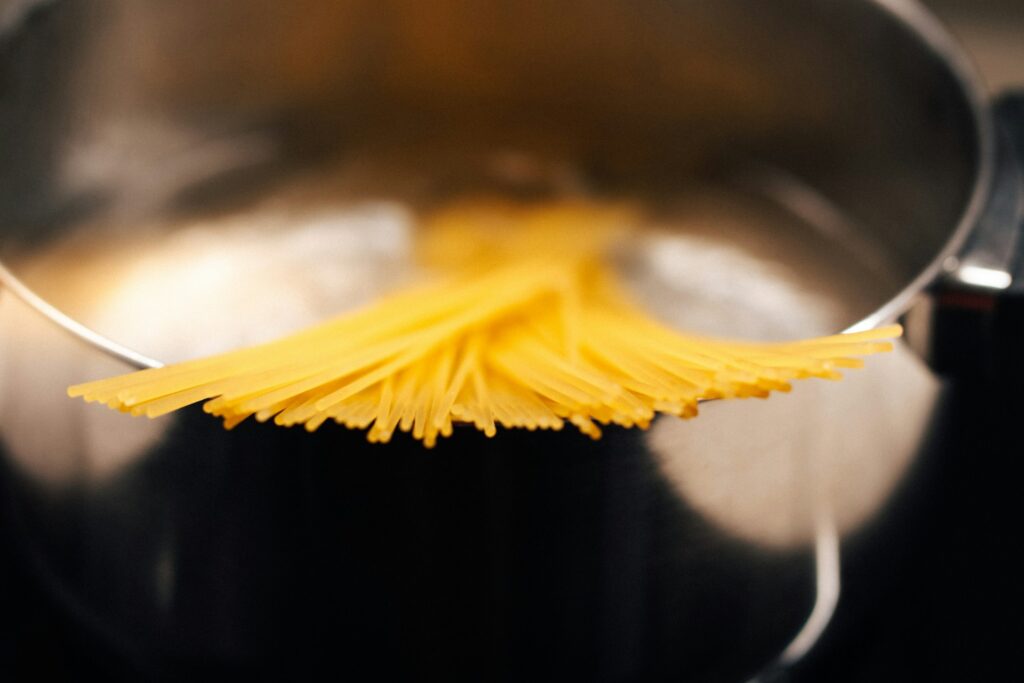
Failing to save some pasta water is a small error with a big impact. The starchy liquid helps sauces cling to noodles and adds body, creating a smooth and cohesive dish. It also balances sauce texture, keeping it from becoming too dry or watery. Scoop out at least half a cup before draining so you can use it if needed. Adding just a splash to your sauce brings flavors together and prevents the pasta from feeling dry or plain. This trick is simple yet powerful, and it separates well-prepared pasta from common pasta mistakes. Professional chefs often rely on this step to achieve restaurant-quality results, and home cooks can benefit from doing the same.
Rinsing Pasta After Cooking

Rinsing pasta under cold water may seem helpful, but it strips away starch and flavor. This prevents sauces from binding and leaves the noodles bland and less satisfying. Unless you are making pasta salad or a stir-fry where you want to stop cooking quickly, rinsing is unnecessary. For hot dishes, keeping the starch on the pasta ensures better taste and helps sauce cling naturally. Skipping the rinse is one of the easiest ways to avoid pasta preparation missteps and create a dish with full flavor. The only exception is when you plan to use the pasta in a cold recipe, where rinsing stops the cooking and prevents clumping. Otherwise, let the noodles keep their starch for a more authentic result.
Final Thoughts
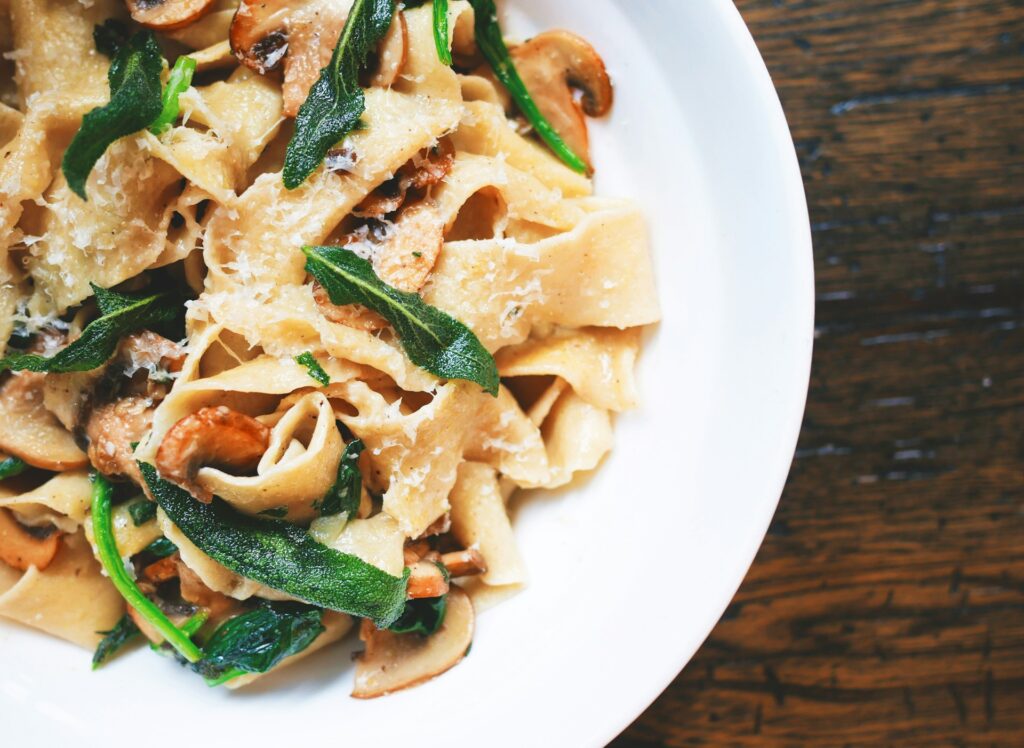
Cooking pasta correctly requires attention to detail, but it is not difficult. Use enough water, salt it generously, and stir instead of adding oil. Cook noodles al dente, save some pasta water, and avoid rinsing unless the recipe specifically calls for it. By avoiding these mistakes while cooking pasta, you will serve dishes that are flavorful, satisfying, and closer to authentic Italian tradition. With practice, you will build confidence in the kitchen and enjoy better results every time you prepare pasta.
Disclaimer: This article was created with AI assistance and edited by a human for accuracy and clarity.
